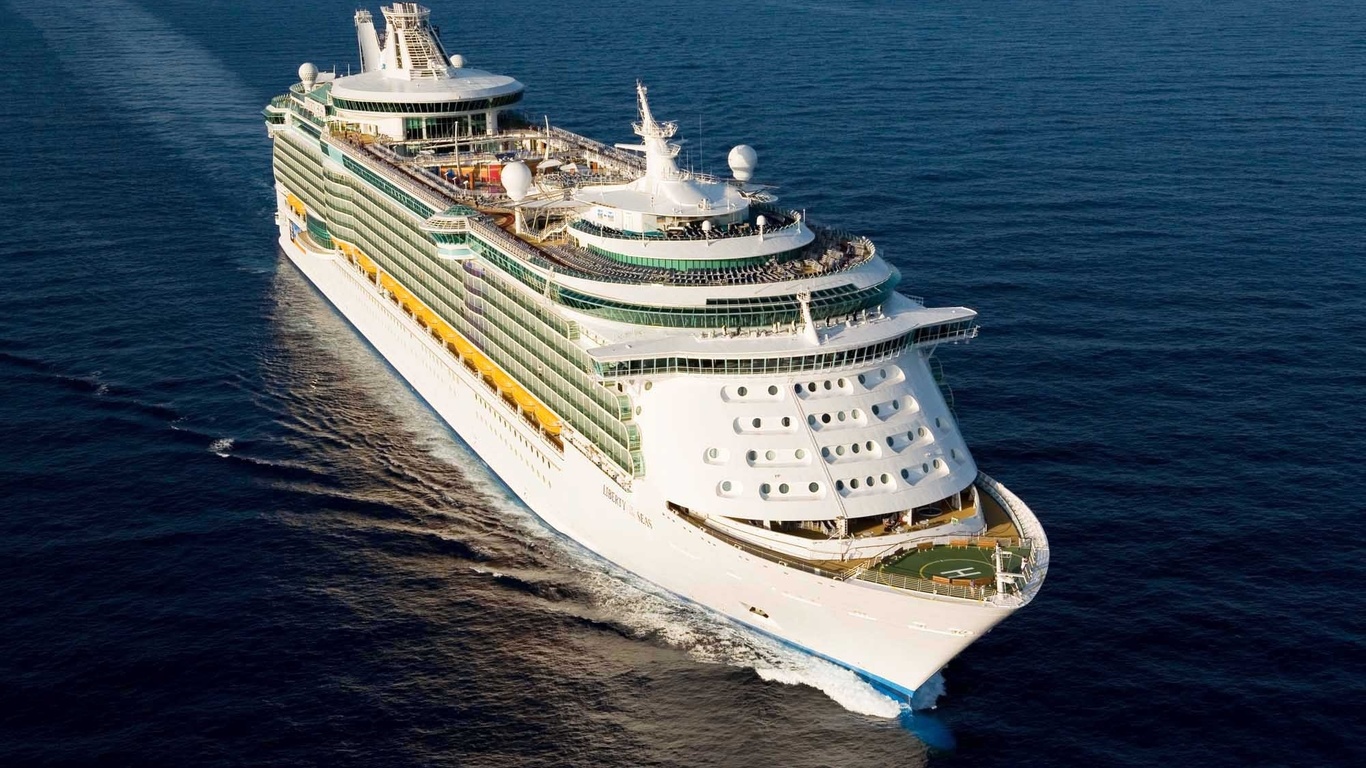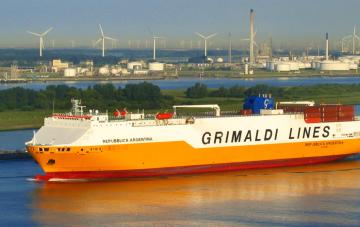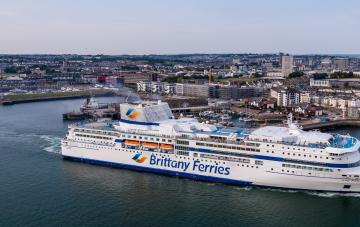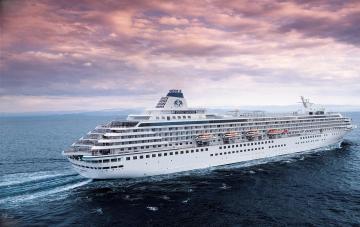Schepen en cruises zijn erg populair geworden, omdat veel mensen ze jaarlijks bezoeken. Daarom zijn bepaalde regels en wijzigingen ingevoerd, zowel op het niveau van de overheid als op het niveau van de motor, om reizen veiliger en comfortabeler te maken.
Met de ontwikkeling van technologie en motoren zijn veel dingen mogelijk en toegankelijk geworden voor gewone mensen over de hele wereld. Terwijl we allemaal genieten van de ontwikkeling van technologie en de nieuwe kansen die ons worden geboden, ontwaken meestal enkele zeer natuurlijke vragen. Deze vragen doen zich vooral voor als we zien dat iets in strijd is met de wet van de fysica.

Een pure schending van de wet van de fysica is enorme auto ' s vliegen hoog in de lucht en het dragen van honderden mensen aan boord. Een paar eeuwen geleden zouden mensen het nooit geloofd hebben, en de aanblik van vliegende objecten in de lucht zou eerder getuigen van metafysische vaardigheden dan van motoren. Hetzelfde gebeurt met grote schepen en cruises.
Het zou heel eenvoudig moeten zijn. Als we een zwaar voorwerp in het water laten zakken, zinkt het. We stoppen een munt in het water en het zinkt. Als we in het water springen zonder te weten hoe we moeten zwemmen, zullen we ook verdrinken. Aan de andere kant, enorme schepen en cruises honderden meters lang en met een gewicht van enkele duizenden ton kunnen blijven drijven voor een zeer lange tijd.
Cruiseschip reizen is zeer populair geworden, vooral in de afgelopen jaren. Dit is niet langer een beroep alleen voor rijke mensen. Gewone mensen kunnen zich ook een cruise veroorloven. Volgens de statistieken, meer dan 25 miljoen mensen maken cruises per jaar. Dit is een aanzienlijk aantal, en het groeit voortdurend.
Het is ook een enorme paradox dat een van de droevigste gebeurtenissen in de geschiedenis en een van de grootste rampen in de eerste plaats een grote bijdrage heeft geleverd aan de cruiseindustrie. We zijn allemaal bekend met de meest populaire cruiseschip in de wereld, de Titanic. Als je het verhaal niet kent, had je op zijn minst de film moeten kijken. De geschiedenis van de Titanic is erg triest en triest, omdat veel mensen stierven als gevolg van het ijsberg ongeluk. Echter, op het einde, het werd een van de meest beroemde historische gebeurtenissen en een van de grootste motieven voor de voortzetting van de verdere ontwikkeling van de cruise-industrie.
Cruises kunnen enorm zijn. Soms kunnen ze meer dan enkele honderden meters lang zijn, en dit is niet ongebruikelijk. Ze vervoeren honderden mensen, hun bagage, uitrusting, tafels, bedden, douches, water en motoren. In het algemeen kan het gewicht van de cruiser meer dan enkele duizenden ton zijn. Dit is een enorm getal, vooral als je het vergelijkt met een klein muntje dat meteen in het water denkt zodra je het gooit.
Echter, andere vragen rijzen hier, heb je je ooit afgevraagd hoe een oude man stak een boodschap in een fles en het niet verdronken, maar integendeel, de zee droeg de fles. Of heb je gedacht aan een volleybal? Het is erg licht, maar zelfs als het in het water komt, zinkt het nooit, het drijft. Heb je gedacht aan iemand die op zijn rug ligt en op het water drijft? Waarom gebeurt dit en als natuurkunde van toepassing is op water in het algemeen, waarom zijn er dan zulke grote uitzonderingen?
Populaire artikelen
Er zijn niet veel mysteries hier, maar er is lucht. Lucht is de hoogste component die in elk object kan worden gevonden, en het is lucht die andere objecten gemakkelijker maakt en hen de mogelijkheid geeft om verder te gaan naar iets dat tegen bepaalde wetten handelt. Om preciezer te zijn, zal ik proberen de motor en de hele structuur van de cruise uit te leggen.
De grootte van het vaartuig wordt berekend op basis van de tonnage. Hoewel, dit is meer Een maat van volume dan gewicht. Dit betekent dat de tonnage wordt bepaald door de binnenruimte van het schip. De tonnage van een schip wordt gemeten aan de hand van de hoeveelheid water die het aangeeft.

Allereerst moet worden opgemerkt dat slechts 10% van het hele schip onder water staat. Natuurlijk ligt het zwaarste deel van het hele schip, de motor, precies binnen deze 10%. Ondanks de schijnbaar onmogelijke hoogte ten opzichte van het volume onder de waterlijn, wordt het zwaartepunt laag gehouden omdat de zwaarste uitrusting benedendeks is. Er zijn ook tanks met afval en brandstof, evenals met drinkwater. Er zijn ballasttanks met water dat van het ene uiteinde van het schip naar het andere en van links naar rechts kan worden gepompt om het evenwicht en de stabiliteit van de gehele romp te behouden.
Nu komt alle natuurkunde. Een cruiseschip verplaatst een hoeveelheid water die gelijk is aan zijn eigen massa. De druk van de zee drukte op de romp van het schip om de neerwaartse kracht van de massa van het schip te weerstaan. In tegenstelling tot lucht, water kan niet worden samengedrukt, dus de gecombineerde kracht creëert drijfvermogen. Dit principe werd 2300 jaar geleden voor het eerst ontdekt door Archimedes.
Het water dat het cruiseschip verplaatst wordt golvend en gewassen als het beweegt. Om drijfvermogen te creëren, heeft een afgeronde U-vormige romp de voorkeur. Sommige schepen hebben een vlakke bodem. Ze kunnen ook blijven drijven voor een zeer lange tijd, met het enige verschil dat het lastig voor hen om te bewegen in zware zeeën zal zijn.
Terwijl het basisprincipe van een cruiseschip is om drijvend te blijven, moet de hele kern helpen om aan dit principe te voldoen. De U-vorm is essentieel voor het weerstaan van obstakels zoals rotsen, zandbanken, betonnen pieren en ijsbergen. Binnen een aantal aparte compartimenten met automatische waterdichte deuren voorkomen dat de behuizing volledig met water wordt gevuld. Op de Titanic bereikten deze compartimenten niet voldoende hoogte, en het water stroomde van de ene naar de andere.
Er waren andere onaangename gevallen met cruiseschepen. Sommige van hen werden veroorzaakt door een motorstoring, terwijl andere werden veroorzaakt door verkeerde beslissingen en het defect van de kapitein. Een voorbeeld hiervan is de Costa Concordia. Het lot van het schip en de 33 mensen aan boord werd bepaald door de beslissing van de kapitein om heel dicht bij de rotsen te varen. Op dat moment stortten verschillende compartimenten tegelijk in, en de poging van de kapitein om het schip te keren leidde tot het feit dat het scheef ging, wat tot droevige gevolgen leidde.
Een ander zeer belangrijk doel van waterdichte compartimenten is om brand aan boord te voorkomen. In de moderne wereld moet er minder angst zijn voor een ijsberg, omdat de verspreiding van vuur veel realistischer klinkt.
Terwijl schepen en cruises zijn zeer populair geworden, en veel mensen bezoeken ze jaarlijks, bepaalde regels en veranderingen zijn ingevoerd, zowel op het niveau van de overheid en op het niveau van de motor, om reizen veiliger en comfortabeler te maken. Dus de volgende keer dat je aan boord stapt, moet je weten waarom het schip niet denkt en blijft drijven. En als je, net als ik, bang bent om te zeilen, bedenk dan dat de kans op een ramp of een botsing van een schip met een ijsberg kleiner is dan de kans dat je in de komende vijf jaar je eigen jacht hebt.






